Roots of Resilience Field Day Showcase Building Fire Resistance























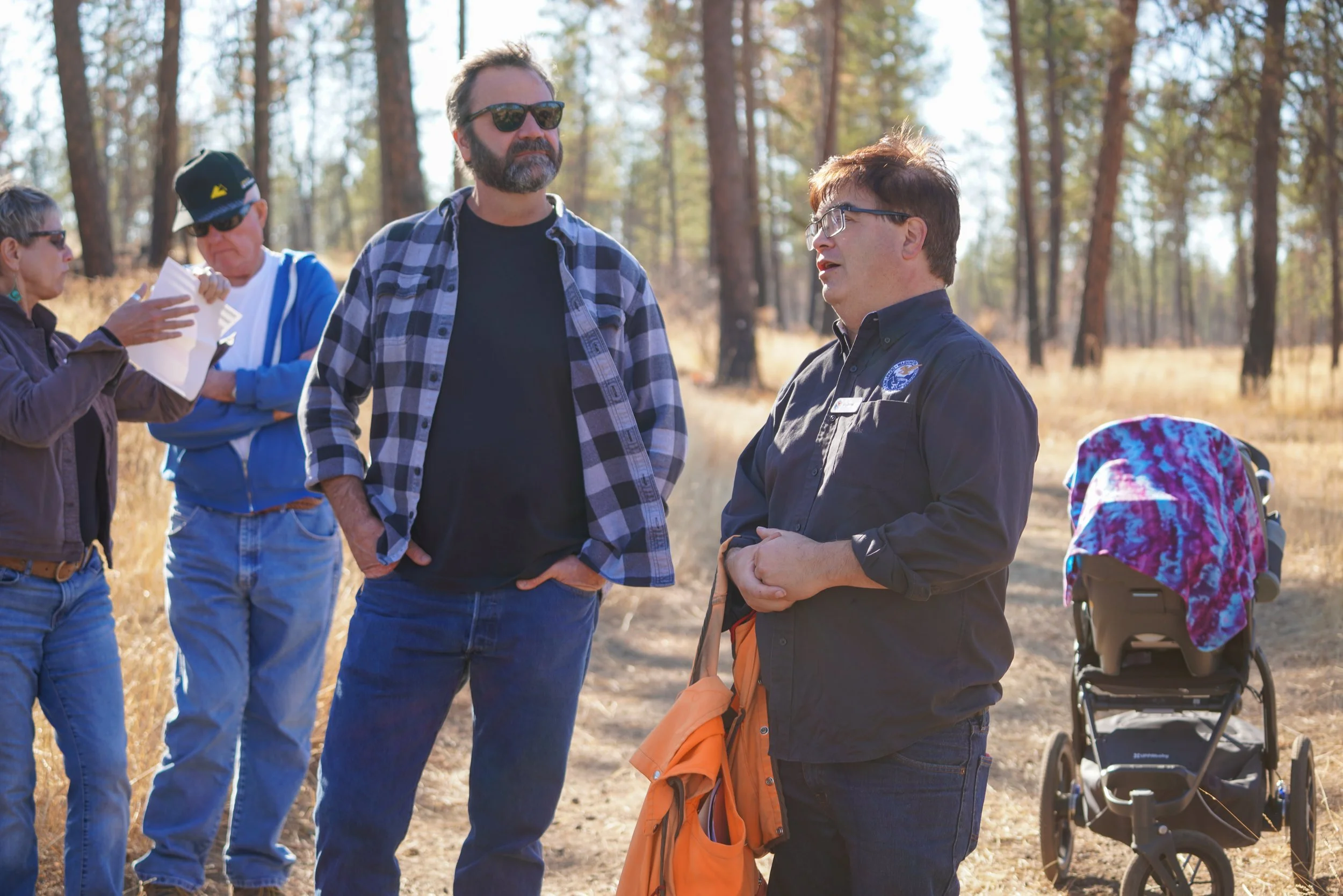












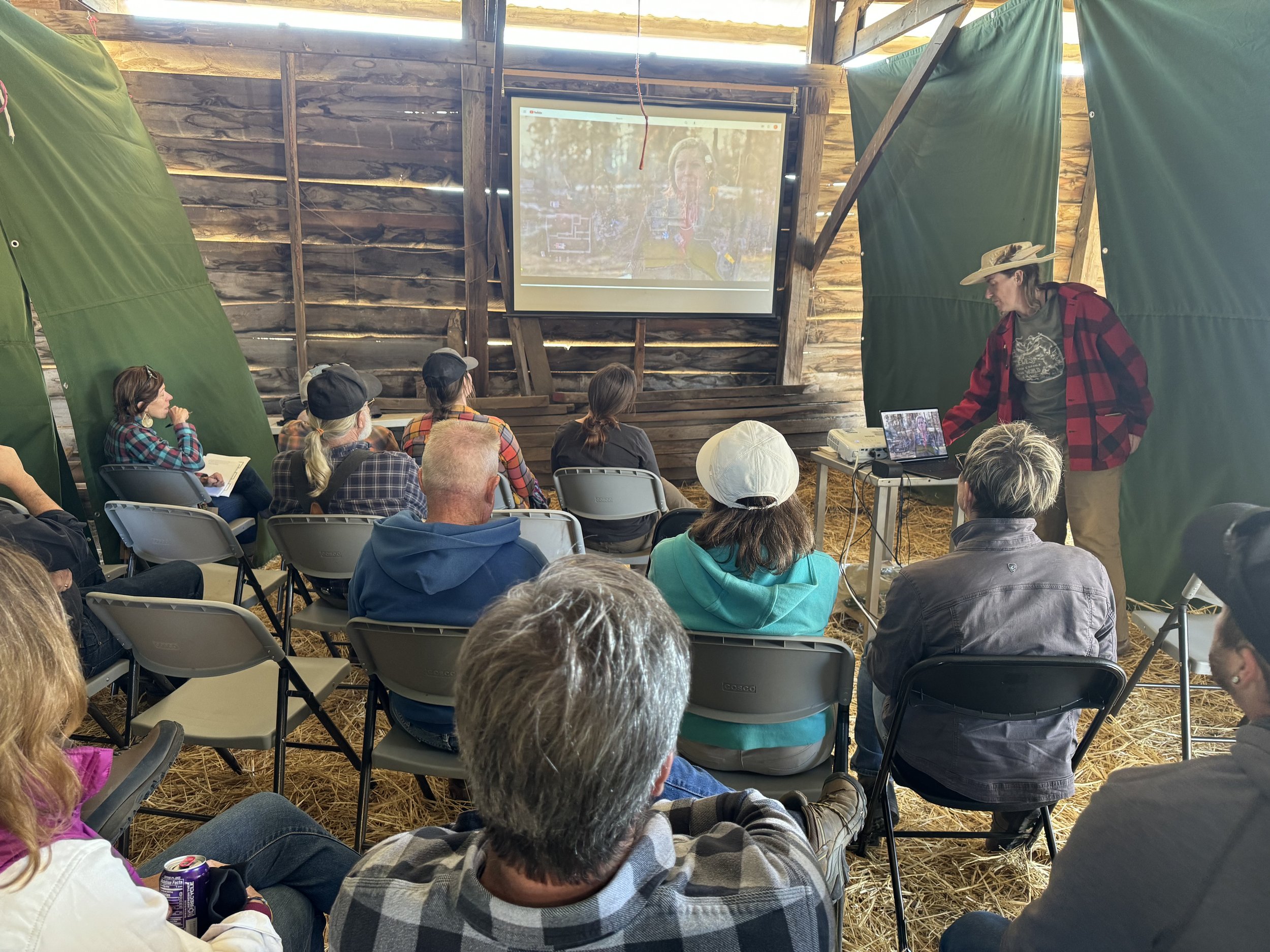

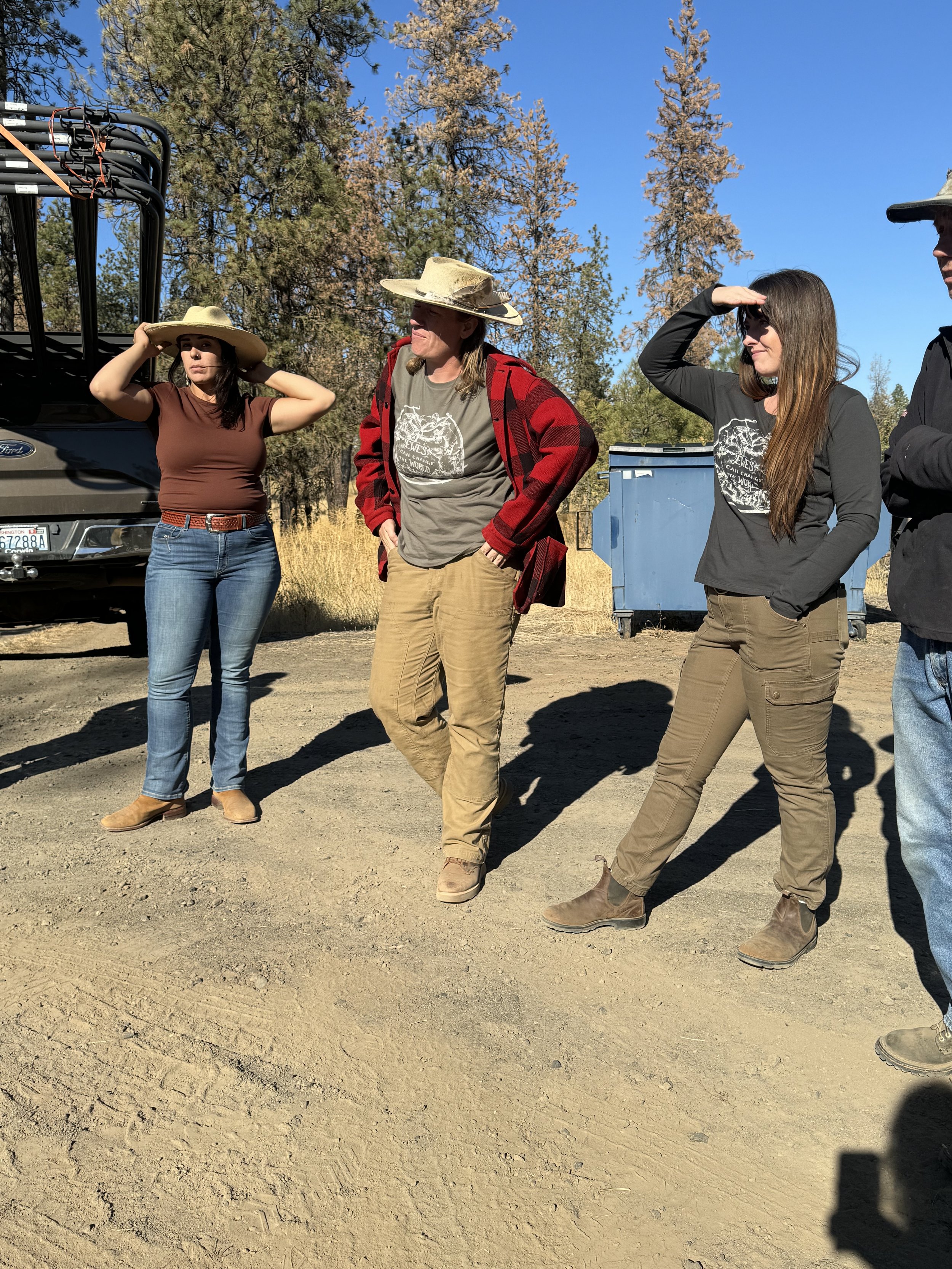
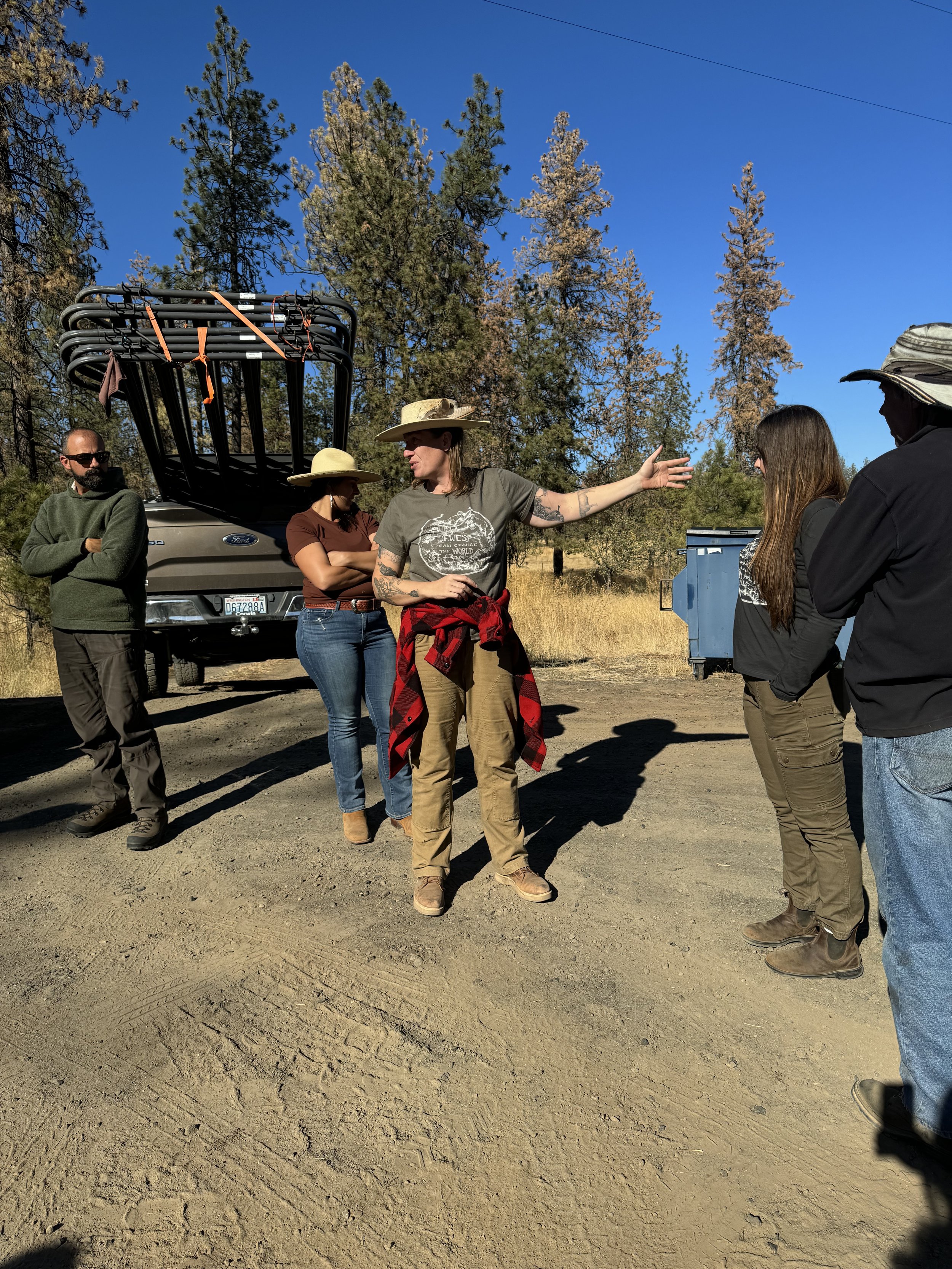
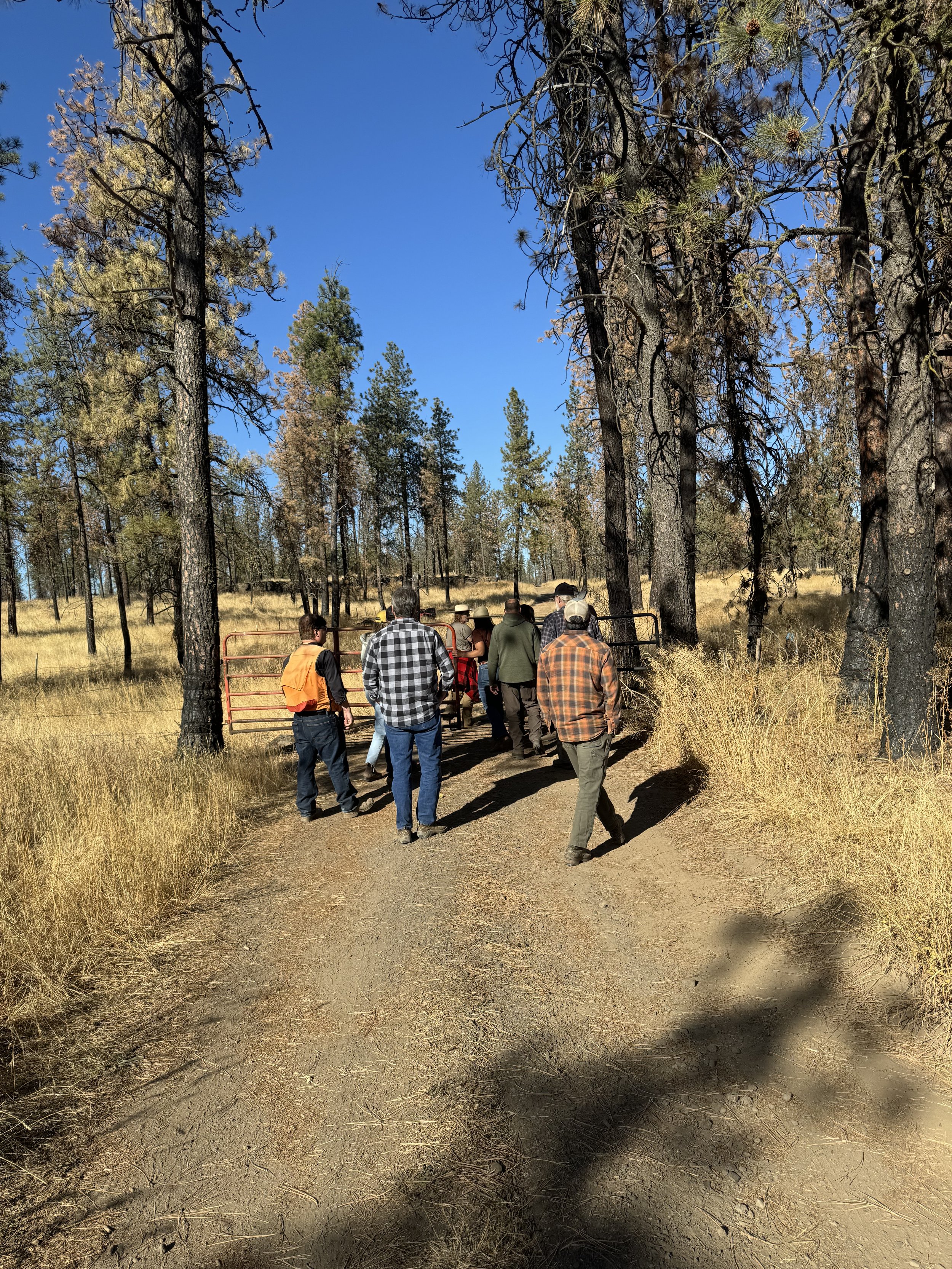
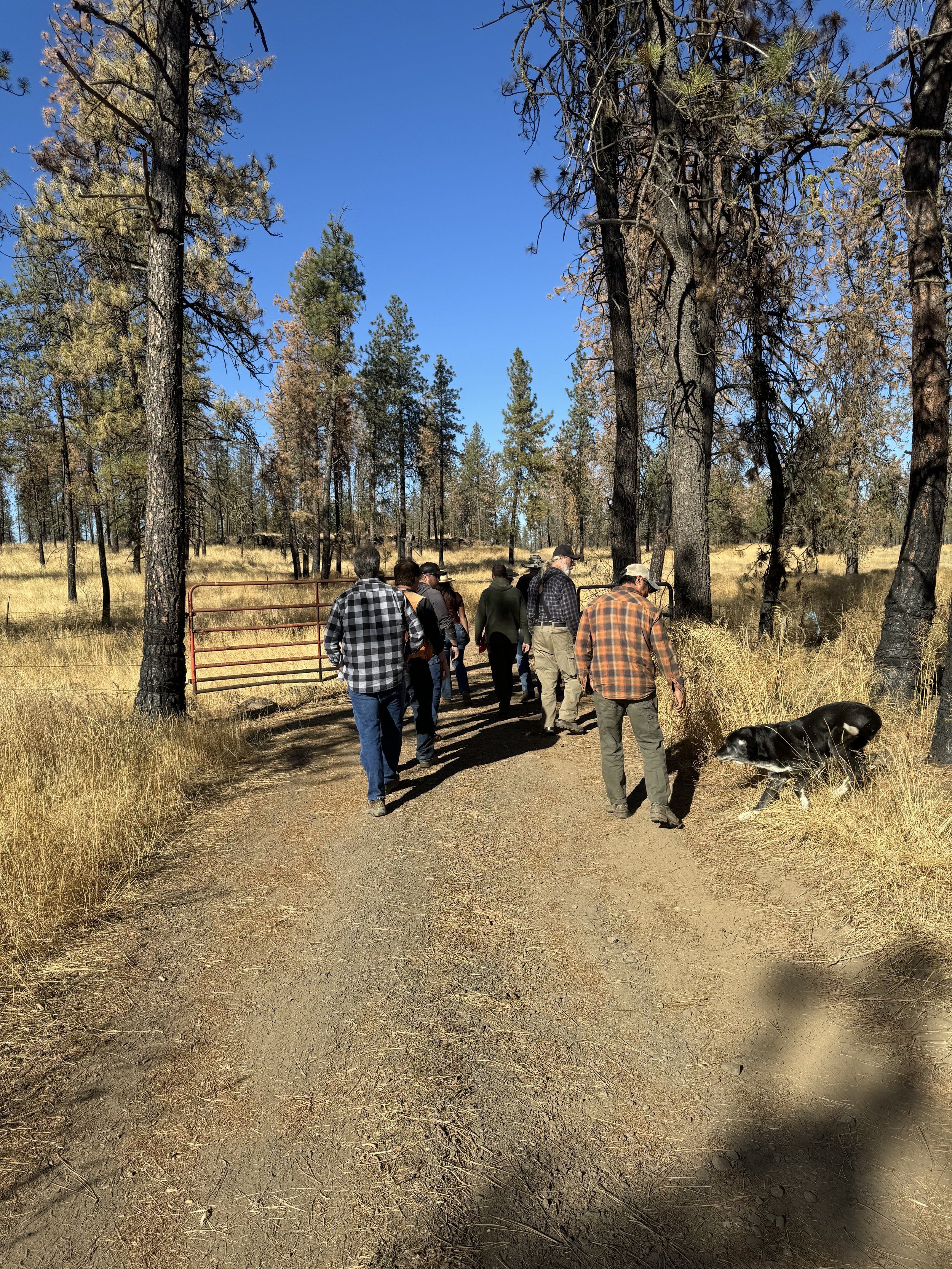
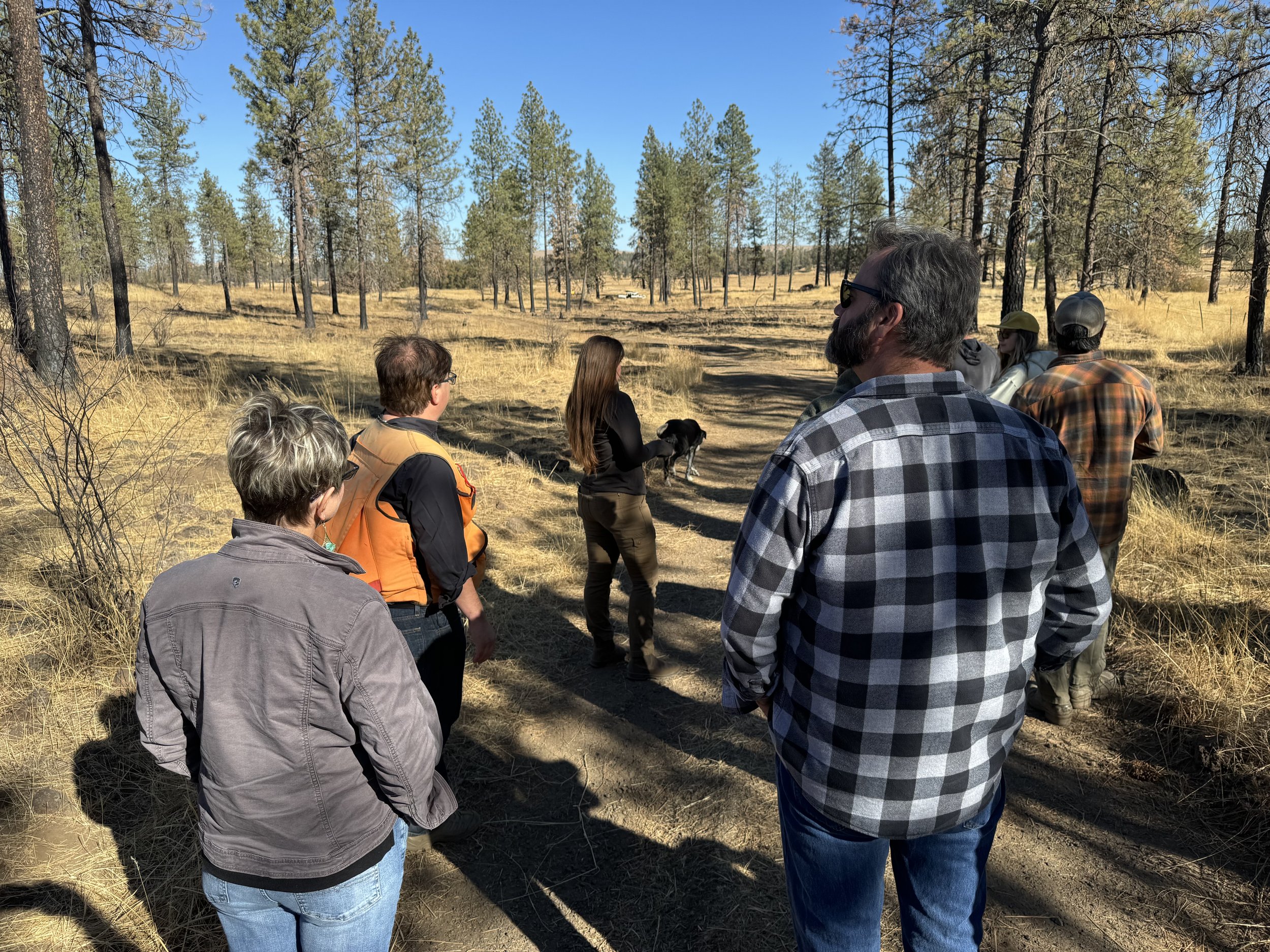
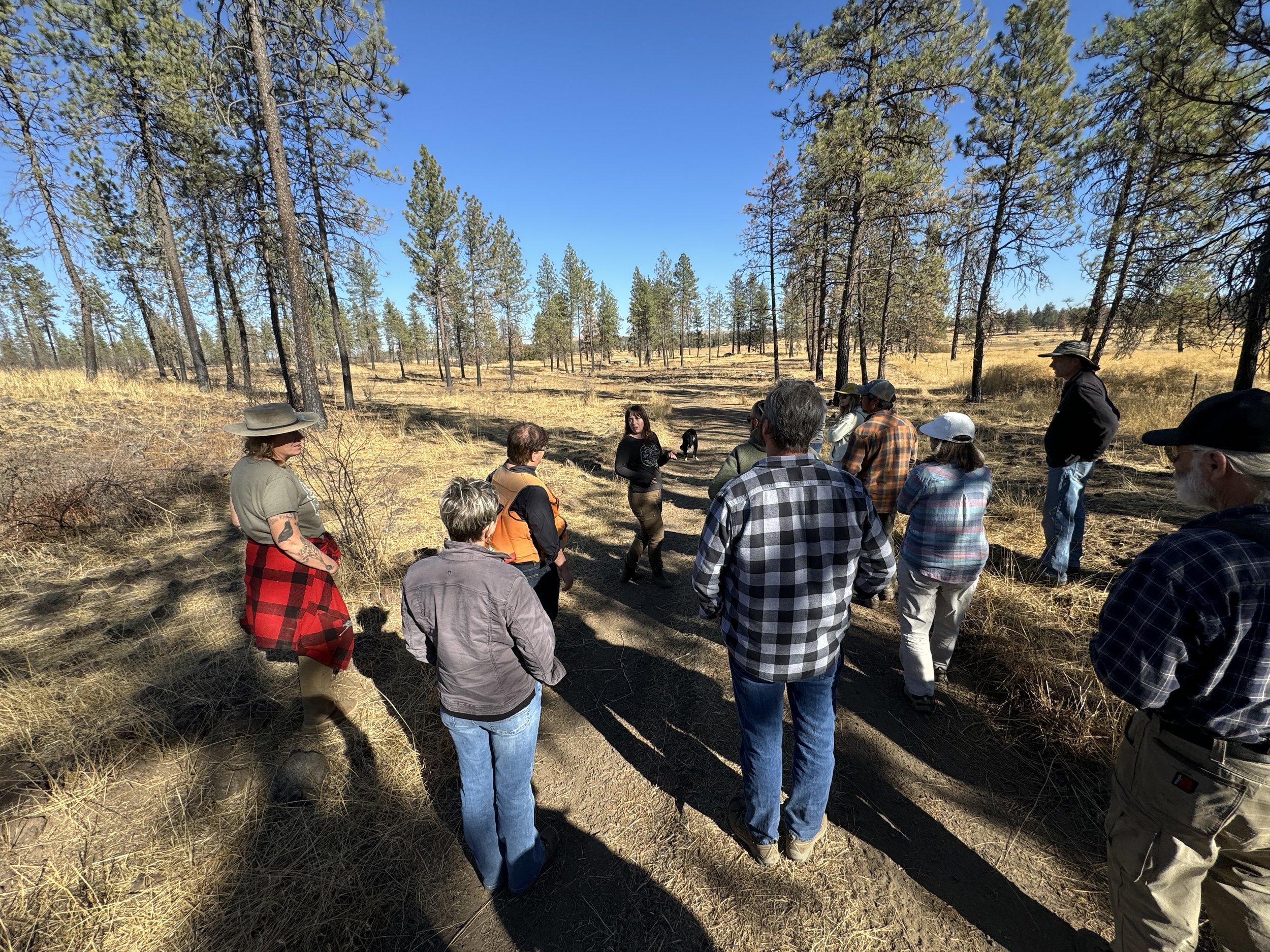
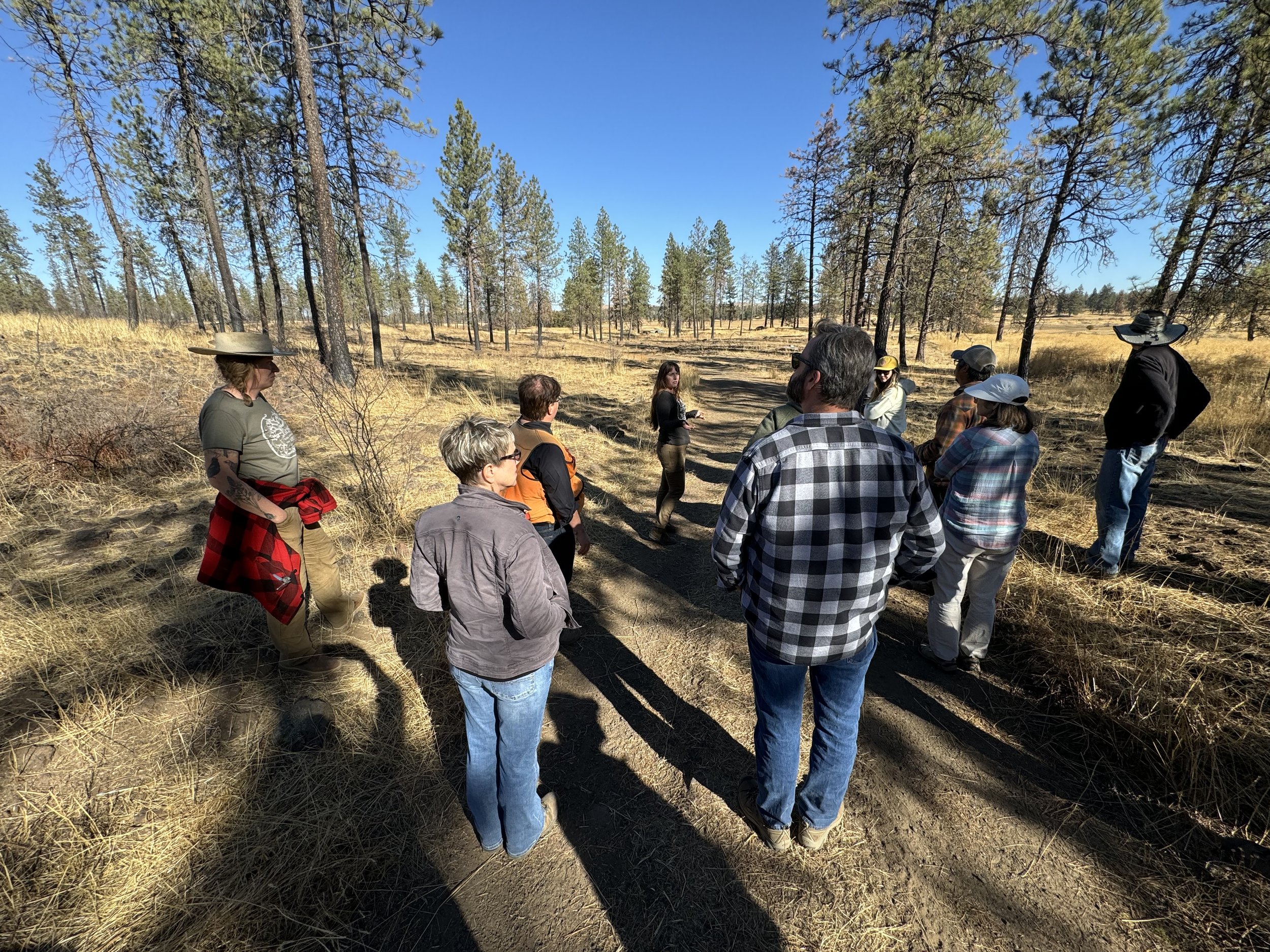
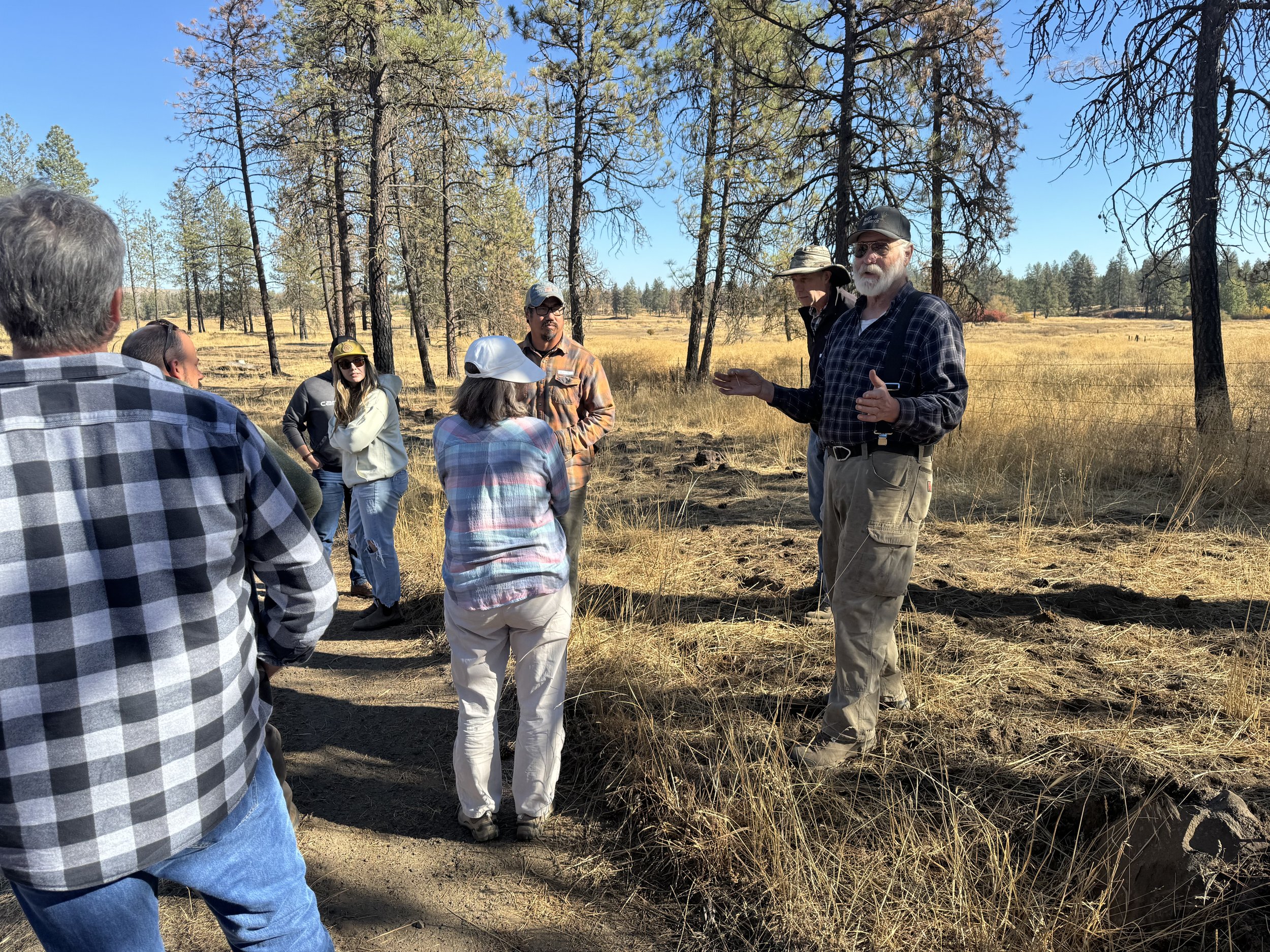
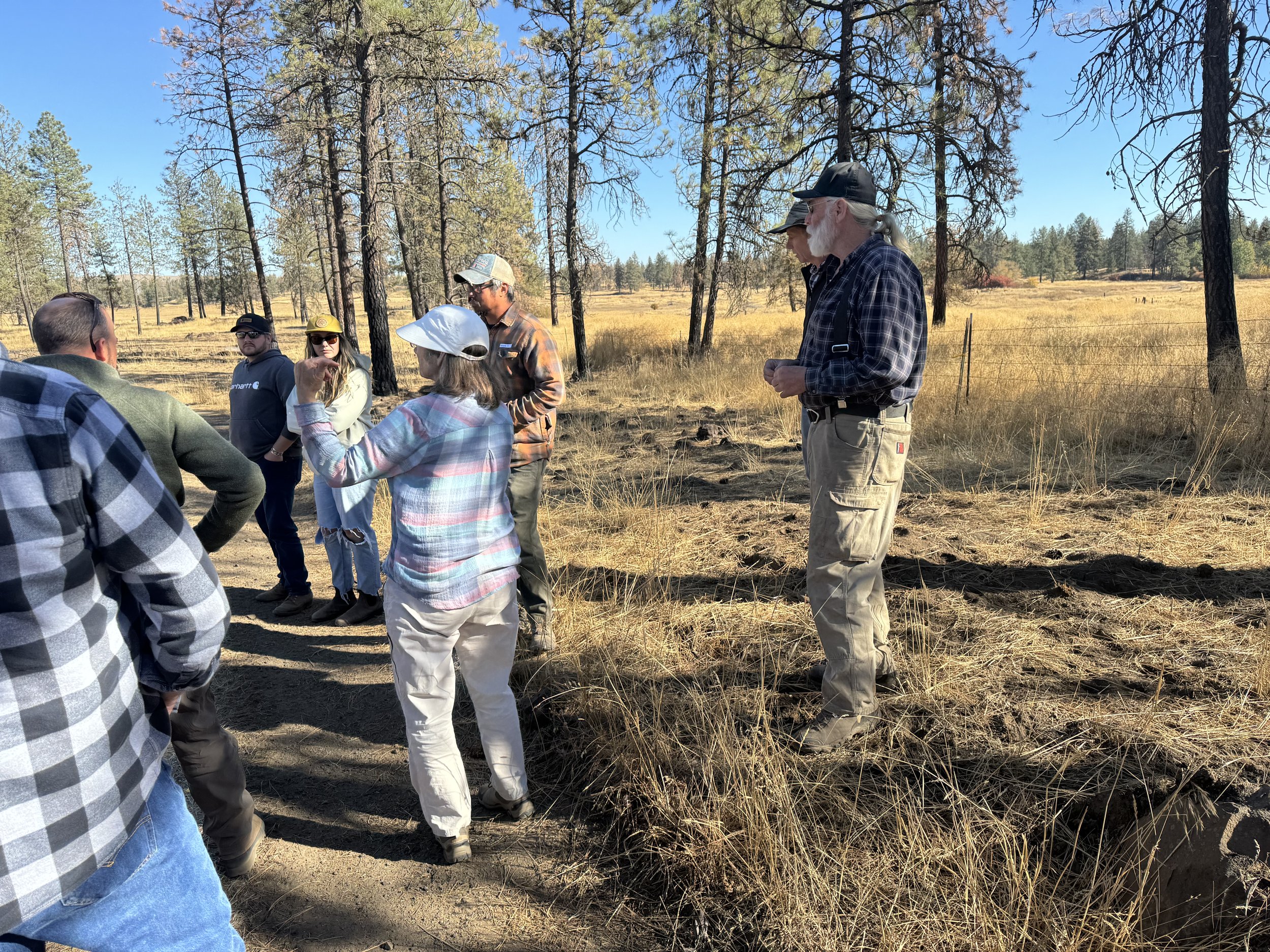

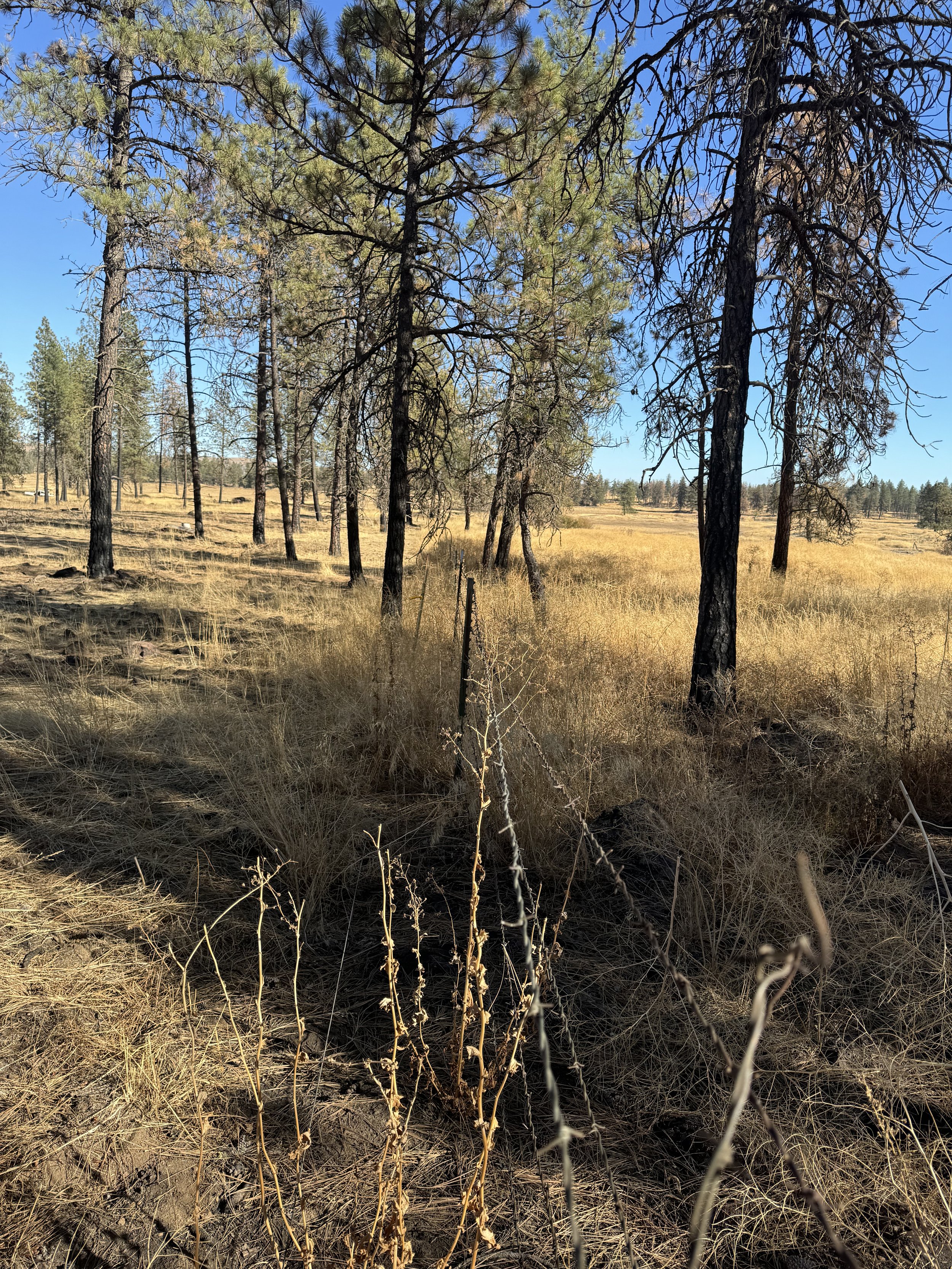
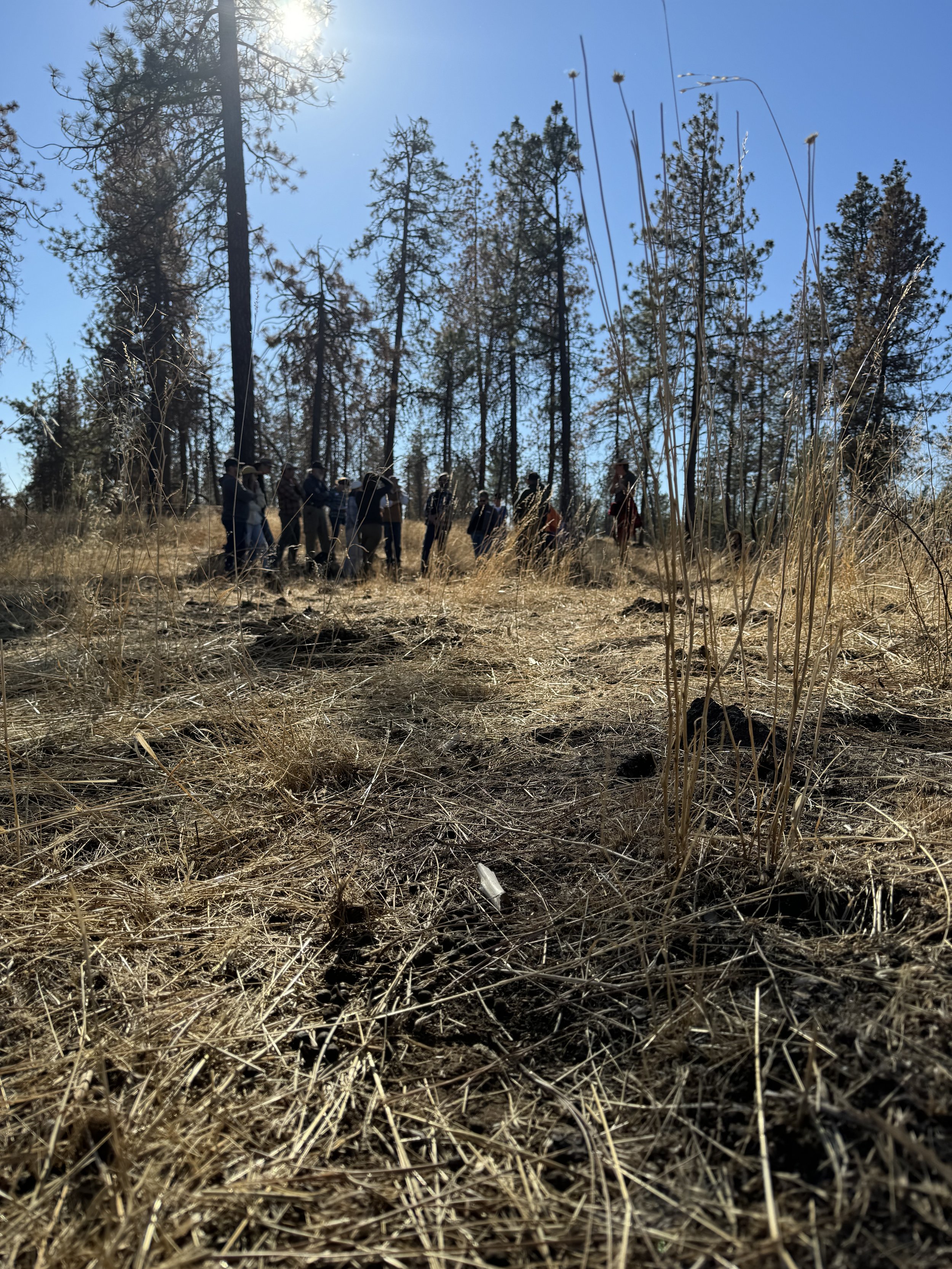
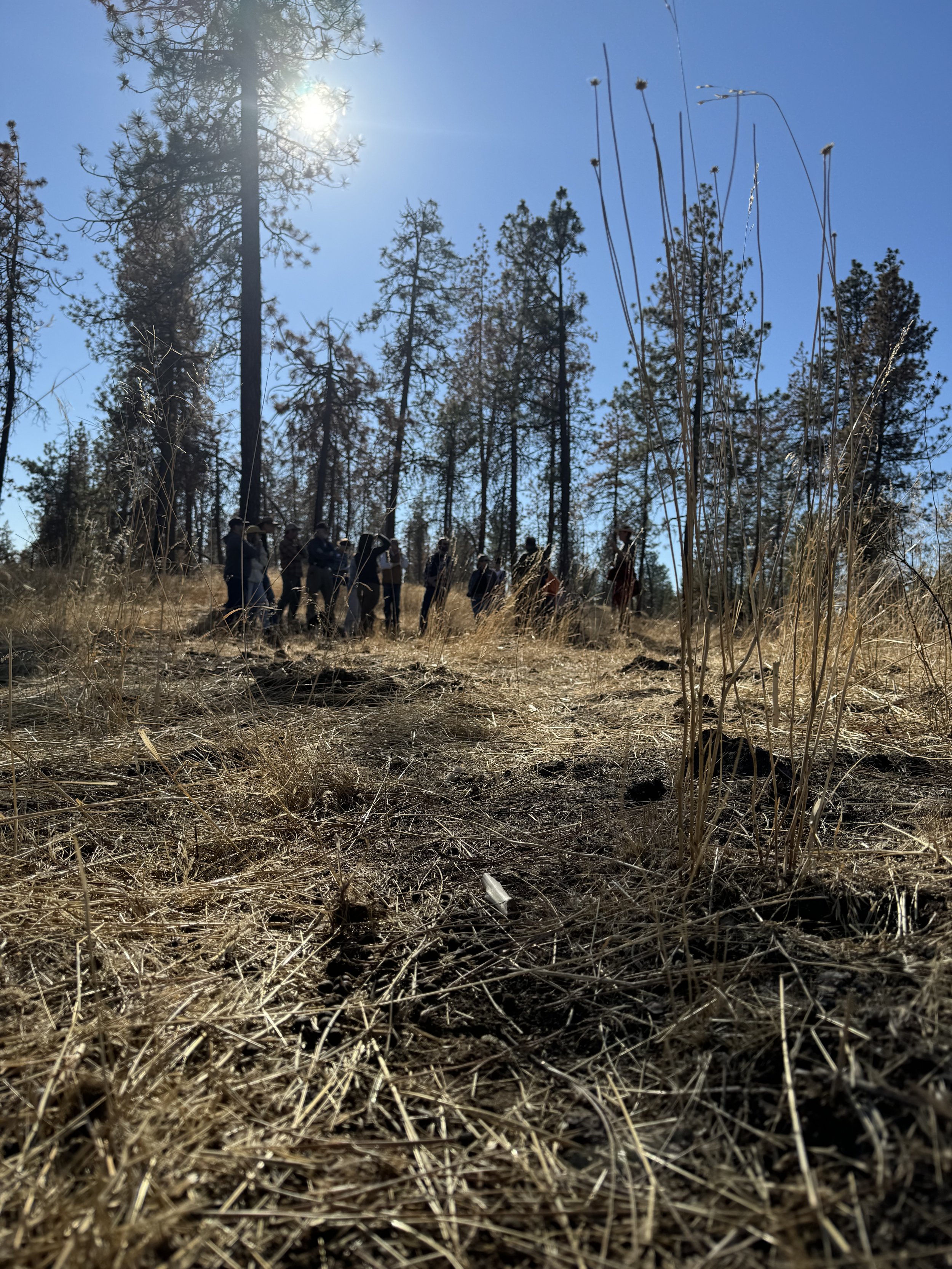
Photo credit: Jessa Lewis
By Beth Robinette
On October 12, 2024, Lazy R Ranch hosted the "Roots of Resilience" Field Day, bringing together farmers, ranchers, and land managers to discuss strategies for building fire resilience. Co-hosted by American Farmland Trust and the Spokane Conservation District, the event focused on land management solutions like prescribed burning and grazing to provide practical approaches to mitigate wildfire risks while restoring the health of our landscapes.
As the owner of Lazy R Ranch, I’ve seen firsthand the devastating impact of wildfire. In 2023, the Gray Fire burned 10,000 acres, including about half the acreage of our ranch. That experience underscored the urgency of proactive land management, but experts were aware of the high level of risk in our fire district for years. At the field day, we explored how advanced fire modeling from the Fire Lab in Missoula, run by the US Forest Service, is helping predict where fires are likely to cause the most damage. Although this information is sobering for communities like Spokane, which still experience high threat levels, these models have the potential to guide us in placing fire breaks and using prescribed burning and grazing more strategically.
Dale Swedberg from the Cascadia Prescribed Burning Association shared invaluable insights on indigenous fire management, showing how this landscape was sustainably burned for millennia as part of a careful land stewardship regime. Indigenous peoples used fire to manage ecosystems, maintaining healthy forests and grasslands through regular, controlled burns. This practice kept fuel loads low and promoted biodiversity, making the land more resilient to fire. Swedberg emphasized that many of our current challenges stem from the disruption of these traditional practices.
While prescribed fire is crucial, it's not always practical near homes and infrastructure. Prescribed grazing offers a complementary tool, reducing vegetation that fuels wildfires and creating fire breaks in areas where burning isn't safe. Together, these approaches can significantly reduce fire risks across the landscape.
Building fire resilience isn’t something we can do alone—it requires community collaboration. Fires don’t stop at property lines, so we must think bigger. By organizing community-based prescribed burning and grazing projects, we can create landscapes that are not only fire-adapted but fire-resilient. The tools of burning and grazing, alongside advanced modeling of fire behavior, offer incredible opportunities to create fire-resilient communities, especially in areas that have already been flagged as high-risk.
For those interested in learning more about prescribed grazing or fire resilience strategies, I encourage you to get involved. Whether it’s by reaching out to your local conservation district, extension office, or by beginning conversations with your neighbors, we need a grassroots movement around how we can approach collaborative solutions to making our communities more fire resilient. It’s time for us to take action, integrate proven land management practices, and protect our communities and landscapes for the future.
Nurturing New Roots: Building Community for Opportunity and Resilience
By Alex Machado
Whenever I am asked to participate in educational programming in the regenerative ag space, I often reflect on my own journey from New Cowgirl Camp alumni to facilitator, one filled with immense gratitude for the lessons learned and the community built along the way. Initially, stepping into this space felt daunting — as a first-generation, multiracial agrarian navigating the complexities of livestock production without a land base, grappling with imposter syndrome, and feeling the weight of it all. Faced with extraordinary land prices, limited access to resources, and few opportunities for inclusive education, I felt underrepresented and out of place when looking at the faces of regenerative agriculture.
The experience of hosting the New Cowgirl Camp, especially through our collaboration with the Grazing School of the West, opened my eyes to the importance of community in overcoming these barriers and limiting beliefs. My exposure to this growing community revealed a powerful truth: there's incredible strength in being a first-generation land steward. We approach this work with fresh eyes, free from the constraints of outdated practices and legacy pressures. Without inherited debt or being tied to location and infrastructure, we are empowered to dream boldly and redefine what it means to cultivate land and grow food.
Access to land remains a significant challenge for many newcomers. Still, the journey doesn't end with ownership. Through adaptation, innovation, and collectivization, we can uncover various opportunities that contribute to resilient economies and positive impact—without necessarily being a boots-on-the-ground rancher with a dedicated land base. Engaging with fellow participants and the Grazing School of the West team opened my eyes to the potential of prescribed grazing not only as a viable business model but also as an opportunity and solution to this fixed mindset. It’s a powerful tool that enhances ecosystem health while providing opportunities for change and collaboration among new agrarians.
At the camp, we shared stories, experiences, and insights that illustrated how our diversity and combined efforts can create resilient ecosystems and communities. Each participant, with their unique background and perspective, adds richness to our agricultural narrative, reinforcing the idea that collective action drives meaningful change. Through embracing the principles of Holistic Management, I hope that our participants realize that these are not just strategies for land management but also tools for personal growth. Witnessing the vulnerability and authenticity of others gave me the courage to lean into my own journey and to recognize the value I bring as an educator and facilitator. It is our responsibility to encourage and cultivate a new generation of farmers and ranchers who not only confront these challenges but also seize opportunities with a commitment to regenerative practices that promote ecosystem health and community resilience.
If this message resonates with you, I encourage you to participate in conversations about inclusivity in agriculture and explore the valuable knowledge offered through our camps. At Roots of Resilience, we strive to build thriving regenerative communities. If you'd like to learn more about the New Cowgirl Camp, New Rancher Camp, or other collaborations and offerings, please reach out to us.
Creating a Thriving Community





By Sandra Matheson, DVM
When examining the health of our ecosystem processes, observing the Community Dynamics of fauna and flora provides critical information to us. The question is, based on a number of factors including age classification, is this community thriving?
The same holds true in human populations – especially in farming and ranching. From the 2022 Census of Agriculture, we see that the average age of U.S. farmer is 58.1 years. This is older than in the 2017 Census. With only few exceptions, the increased aging trend has continued for several decades.
Biodiversity is critical in any population. This includes both the type of organism and age. If we are observing plants on the land, do we see seedlings and young recruits? Is there a spectrum of age classifications? Or do we find only mature and decadent plant remnants? If it is the latter, we can conclude that this is a dying community.
Are farming and ranching dying professions? Are farmers and ranchers a dying population? Should we be concerned? Well, yes, if we wish to keep eating.
Many civilizations have risen and fallen. There are several possible reasons for societal collapse: social unrest, war, drought, famine, disease, poor leadership, overpopulation, environmental degradation, economic decline, and more. If you look at the root cause of these factors, it has been shown throughout history that when agriculture dies, so does civilization. People need to eat. Scarcity, perceived or real, often leads to fear, greed, social unrest, violence, war, disease, death, mass migration, and/or eventual collapse.
Roots of Resilience has been conducting the New Rancher and New Cowgirl Camps for adults since 2017. Beth Robinette and I were the original facilitators and later brought on Alex Machado for the New Cowgirl Camps. Doug Warnock co-facilitated New Rancher Camp (coed). Beth, Alex, Madison Throop (RoR director) and I recently returned from a camp in northern California. This was a hybrid of the New Cowgirl Camp and Grazing School of the West. We, along with Brittany Cole Bush and her crew had the pleasure to present to an amazing and diverse group of new and aspiring ranchers. They came from a variety of backgrounds, experiences, locations, interests, ages, ethnicity and more.
In my opinion, there is nothing more satisfying than facilitating, mentoring, and inspiring a group of people who will become the next generation of farmers and ranchers. If agriculture and humanity are to survive, this must become a priority. Any community, plant or human, needs young recruits for it to be healthy, thrive, and to endure. When I am not at camp, I support and encourage my grandchildren’s interests on the farm.
Roots of Resilience works to create thriving agricultural communities by teaching, supporting, and inspiring diverse groups of people. If you are interested in learning more about the New Cowgirl or New Rancher Camps, please contact us.

